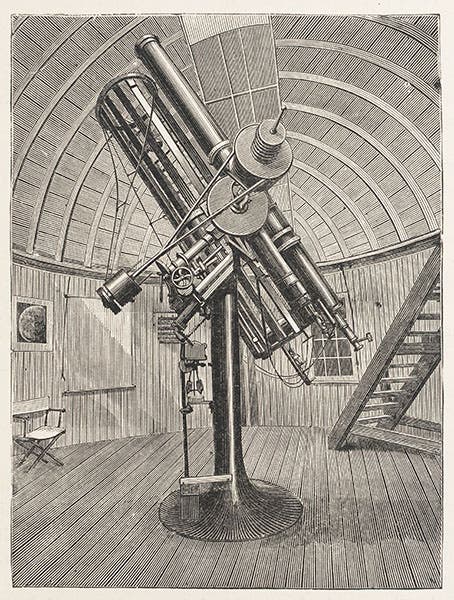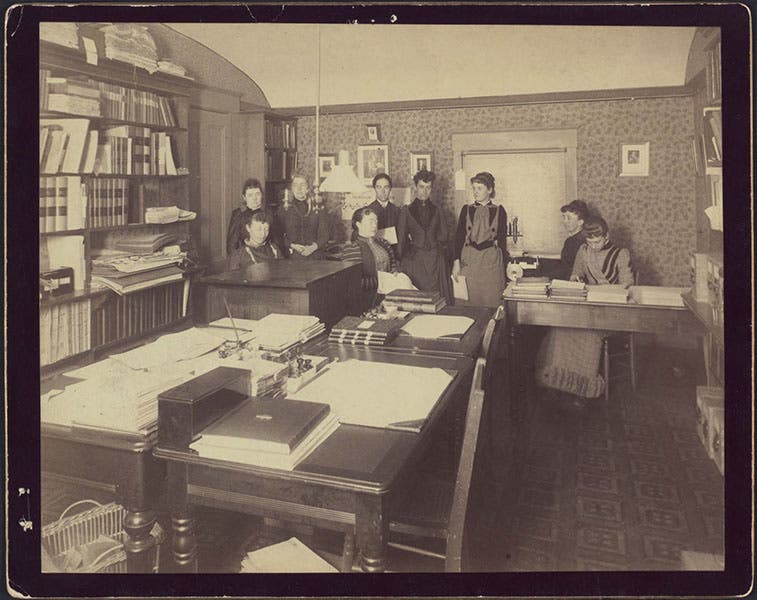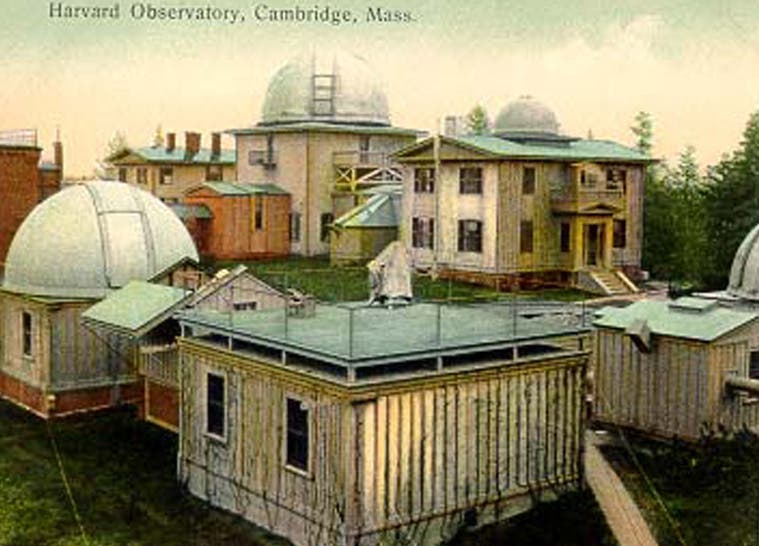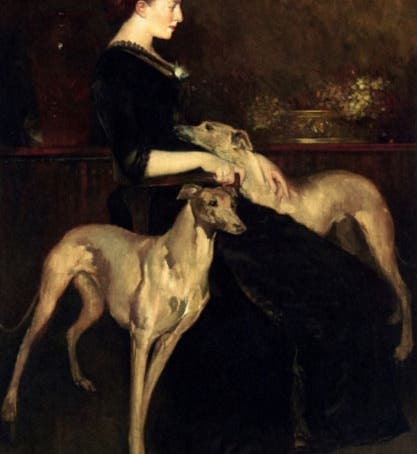Scientist of the Day - Mary Anna Palmer Draper
Born to wealth and privilege on September 19, 1839, Mary Anna Palmer grew up in a New York City mansion on Madison Avenue. Later she dropped her first name and turned her childhood home into a combination laboratory and workshop for her husband, the medical doctor, chemist, and renowned amateur astronomer Henry Draper. The three-story residence also served the couple as a scientific salon – a venue for entertaining their colleagues in the National Academy of Sciences, for hosting lectures on new discoveries to large audiences, and for mounting handsome exhibits of astrophotography.
The Drapers began living their commitment to astronomy as newlyweds in the autumn of 1867. Their honeymoon took them only as far as lower Manhattan, to purchase a glass blank, 28 inches in diameter, which they polished and rouged and coated with silver to fashion the mirror of a large reflector telescope. At their country observatory in Hastings-on-Hudson, they used this instrument to take the first-ever photograph of the spectrum of a star, Vega, in 1872.

Henry Draper's 28-inch reflector, the lens for which was purchased by Henry and Anna on their honeymoon. It is mounted along with a 12-inch Clark refractor that was purchased soon after. Both of these instruments were donated to Harvard College Observatory by Mrs. Draper; from Washington Astronomical Observations, 1876 (Linda Hall Library)
Over a period of fifteen years, Henry and Anna Palmer Draper formed an observational partnership on a par with that of their friends-cum-rivals in England, Sir William and Lady Margaret Huggins. But in 1882, just when the Drapers had organized their affairs to devote themselves full-time to photographing and classifying the spectra of the stars, Henry died suddenly of pneumonia at age forty-five.

Mary Anna Palmer Draper (seated near center) with the women computers at Harvard College Observatory. The woman immediately behind Mrs. Draper is Antonia Maury; just to the right is Williamina Fleming (Harvard College Observatory, courtesy of Tom Fine)
The widow hoped to carry on their planned research with the aid of one or two hired assistants. When this proved too daunting, however, she agreed to let her friend Edward Pickering of the Harvard College Observatory take over the project. She gave all of Henry’s images and notebooks to Pickering, and donated his telescopes as well, paying to have them transported, refurbished, and housed in proper domes. Perhaps most importantly, she channeled the railroad-and-real-estate fortune she had inherited from her father, Cortlandt Palmer, to the work at Harvard, which she insisted on naming the Henry Draper Memorial. She followed its progress closely through a steady correspondence with the director. Though they wrote to each other several times a week over the next thirty years, they never strayed from polite forms of address: “My dear Professor Pickering,” her letters all began, and he replied in kind to “My dear Mrs. Draper.”

Observatory Hill at Harvard, turn of the century, postcard. Three of the buildings in the foreground were erected at Mrs. Draper’s expense, in order to house Henry Draper’s telescopes, which she gave to the College as part of the Draper Memorial. (Harvard College Observatory, courtesy of Tom Fine)
In her regular visits to the observatory, she befriended Annie Jump Cannon and Williamina Fleming, two of the women employed at the observatory to analyze the glass photographic plates, and who carried out the work of creating a stellar classification system that remains in use today. Anna’s closeness with Pickering and his wife, Lizzie Wadsworth Sparks, encouraged the three friends to travel together – to Colorado Springs, for example, to test Pikes Peak’s suitability as a high-altitude observatory site, and to Washington, Georgia, to see the total solar eclipse of May 28, 1900. (Though this was Anna’s second solar eclipse expedition, it provided her first view of totality. When she accompanied Henry to the Wyoming Territory for the eclipse of July 29, 1878, she had voluntarily sequestered herself inside a tent, so as to correctly count and call out the seconds of totality for the observers, with no danger of becoming distracted by the spectacle.)
By the time of her death, on December 8, 1914, Anna Draper had invested a quarter of a million dollars in her husband’s dream. In her will she gifted an additional $150,000 for the ongoing care and study of the several hundred thousand photographic plates, which are still preserved at the Harvard Observatory.
The published results of the Henry Draper Catalogue of Stellar Spectra fill nine volumes of the Annals of the Astronomical Observatory at Harvard College (fifth image). “The Henry Draper Memorial is due to the unfailing devotion of Mrs. Draper to the memory of her husband,” Pickering wrote in December 1918, in a brief preface to volume three, in which her portrait appears as the frontispiece (sixth image). Her devotion and largesse also inspired her to create the Henry Draper gold medal, still awarded today by the National Academy of Sciences for outstanding original contributions to astrophysics.
Dava Sobel is the author of Longitude, Galileo’s Daughter, and, most recently, The Glass Universe, in which Mrs. Draper plays a major role.






![Columbine, hand-colored woodcut, [Gart der Gesundheit], printed by Peter Schoeffer, Mainz, chap. 162, 1485 (Linda Hall Library)](https://assets-us-01.kc-usercontent.com:443/9dd25524-761a-000d-d79f-86a5086d4774/3829b99e-a030-4a36-8bdd-27295454c30c/gart1.jpg?w=210&h=210&auto=format&fit=crop)

